A "hauntingly beautiful" photo of a horseshoe crab has snapped up the top prize in the prestigious Wildlife Photographer of the Year competition.
It was taken by French marine biologist Laurent Ballesta, who won the award for the second time yesterday - beating almost 50,000 other entries from 95 countries.
Wildlife Photographer of the Year is developed and produced by the Natural History Museum, London. From Friday (13 October) visitors will be able to see 100 of these stunning wildlife photos at the museum’s dedicated exhibition.
Below is the winning image in all its otherworldly glory, and a handful of our favourite winners from across the competition’s 19 categories.
RelatedOver 75% of Earth’s undescribed plants threatened by extinction, new report warnsWho is the winner of Wildlife Photographer of the Year 2023?It looks almost too alien to parse, initially. But a trio of fish above it confirm that this hovering golden orb is indeed something on our planet.
Underwater photographer Laurent Ballesta captured the tri-spine horseshoe crab accompanied by three golden trevallies in the protected waters of Pangatalan Island in the Philippines.
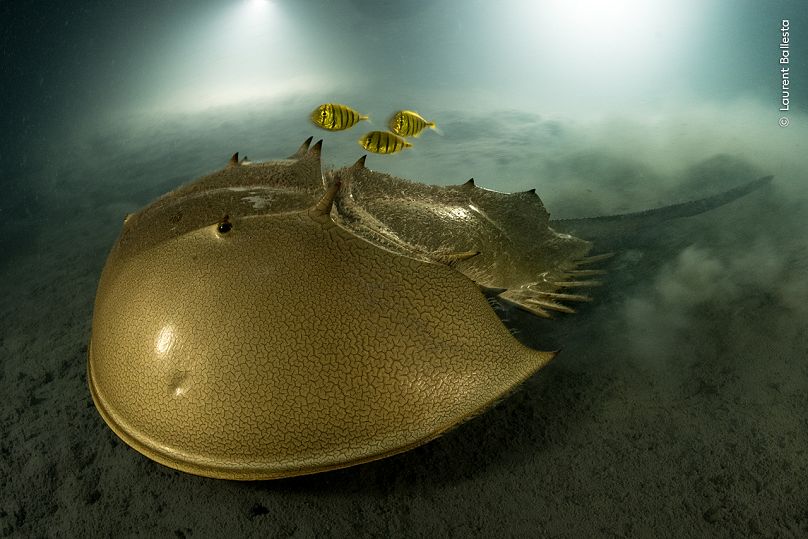 The ancient mariner by Laurent Ballesta. Winner of the Portfolio Award category.Laurent Ballesta/Wildlife Photographer of the Year
The ancient mariner by Laurent Ballesta. Winner of the Portfolio Award category.Laurent Ballesta/Wildlife Photographer of the YearProtection is key for the survival of this unique species. The tri-spine horseshoe crab has existed for more than 100 million years but now faces habitat destruction and overfishing for food and for its blue blood, used in the development of vaccines.
“To see a horseshoe crab so vibrantly alive in its natural habitat, in such a hauntingly beautiful way, was astonishing,” says chair of the jury and editor, Kathy Moran. “We are looking at an ancient species, highly endangered, and also critical to human health. This photo is luminescent.”
Laurent is only the second photographer in the competition’s 59-year history to be awarded the Grand Title award twice, having first won in 2021 with a photo of camouflage grouper fish in Fakarava, French Polynesia.
A marine biologist who has dedicated his life to exploring the oceans, Laurent encounters more opportunities than most; he has led a series of major expeditions involving scientific mysteries and diving challenges.
RelatedHidden seals, forest rodeos, busy bees: A sneak peek at 2023’s Wildlife Photographer of the YearNorthern Lights: See some of the best photos of this stunning natural phenomenonWho won Young Wildlife Photographer of the Year 2023?17-year-old Carmel Bechler from Israel bagged the main youth prize this year, for a dynamic shot entitled ‘Owls’ road house’.
After discovering several barn owls in an abandoned concrete building near a busy road in Hof HaSharon, Carmel and his father used the family car as a hide to take this winning shot.
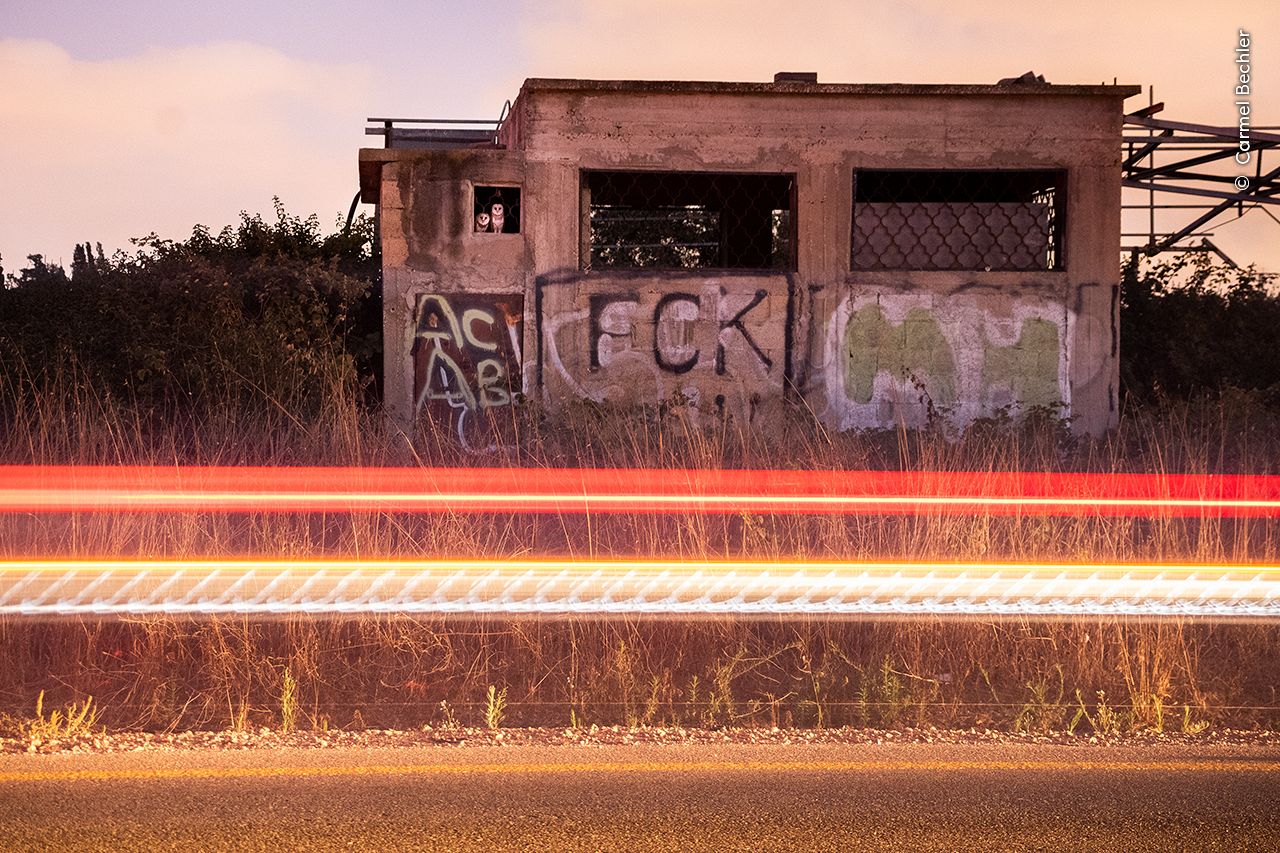 Owls’ road house by Carmel Bechler. Winner of the 15-17s category.Carmel Bechler/Wildlife Photographer of the Year
Owls’ road house by Carmel Bechler. Winner of the 15-17s category.Carmel Bechler/Wildlife Photographer of the YearIsrael has the densest barn-owl population in the world. A national project has provided nesting boxes near agricultural fields, encouraging owls to nest near farmland. Because the owls hunt rodents that eat seeds and crops, this arrangement has reduced the use of pesticides on farms.
“This photograph has so many layers in terms of content and composition. It simultaneously screams “habitat destruction” and “adaptation”, begging the question: ‘If wildlife can adapt to our environment, why can’t we respect theirs?,’” says Moran.
Carmel, who first picked up a camera aged 11, says he hopes to show “that the beauty of the natural world is all around us, even in places where we least expect it to be, we just need to open our eyes and our minds.”
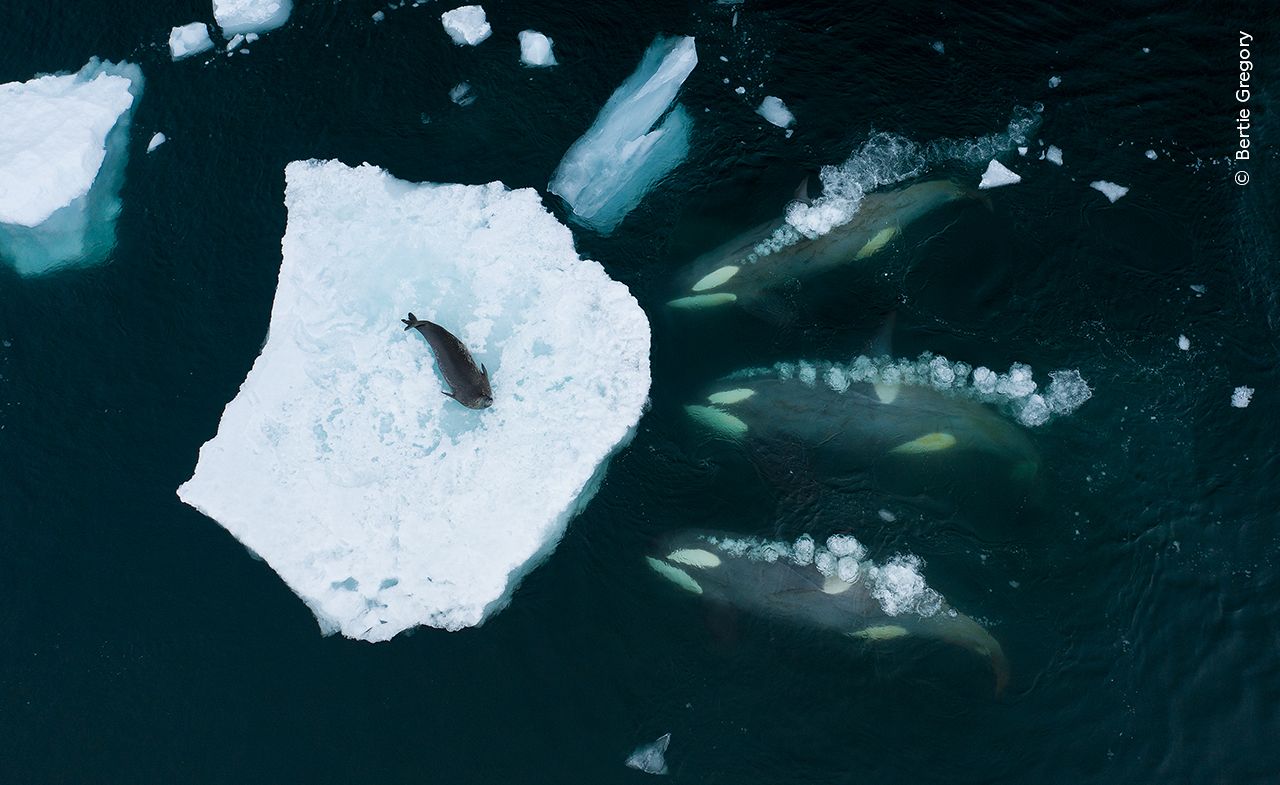 Whales making waves by Bertie Gregory. Winner of the Behaviour: Mammals category.Bertie Gregory/Wildlife Photographer of the Year
Whales making waves by Bertie Gregory. Winner of the Behaviour: Mammals category.Bertie Gregory/Wildlife Photographer of the YearThe Natural History Museum (NHM) also prizes photos that reveal the inner lives of animals, in a way we’d never normally be privy to.
This drone photo of a pod of orcas preparing to ‘wave wash’ a Weddell seal in Antarctica is packed with drama. It earned British photographer Bertie Gregory the top prize in the ‘mammals behaviour’ category.
“We spent every waking minute on the roof of the boat, scanning,” Bertie recalls of his two-month long expedition searching for orcas, spent battling high winds in freezing conditions.
These orcas belong to a group that specialises in hunting seals by charging towards the ice, creating a wave that washes the seal into the water. With rising temperatures melting ice floes, seals are spending more time on land, and the behaviour of ‘wave washing’ may disappear.
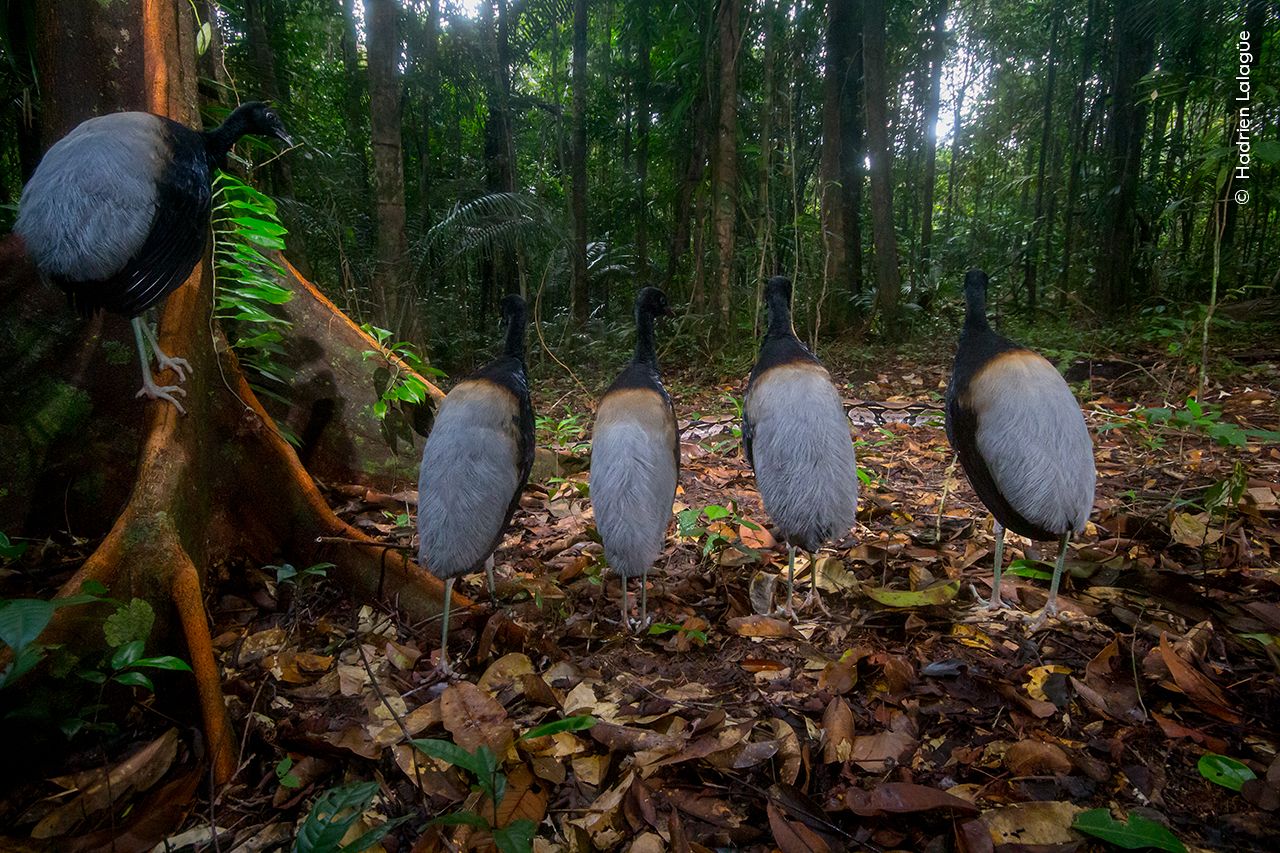 Silence for the snake show by Hadrien Lalagüe. Winner of the Behaviour: Birds category.Hadrien Lalagüe/Wildlife Photographer of the Year
Silence for the snake show by Hadrien Lalagüe. Winner of the Behaviour: Birds category.Hadrien Lalagüe/Wildlife Photographer of the YearIn the ‘birds behaviour’ category, French photographer Hadrien Lalagüe entered with a showstopper.
In perfect alignment, a row of grey-winged trumpeters watching a boa slither past in the rainforest surrounding Guiana Space Center. It took a camera trap and six months worth of patience to achieve this image, maintaining the equipment against high humidity, plastic-munching ants and damage by poachers.
Trumpeters - named for their loud calls - spend most of their time foraging on the forest floor, eating ripe fruits, insects and the occasional small snake. At more than three metres long, the boa constrictor could have made a meal of them.
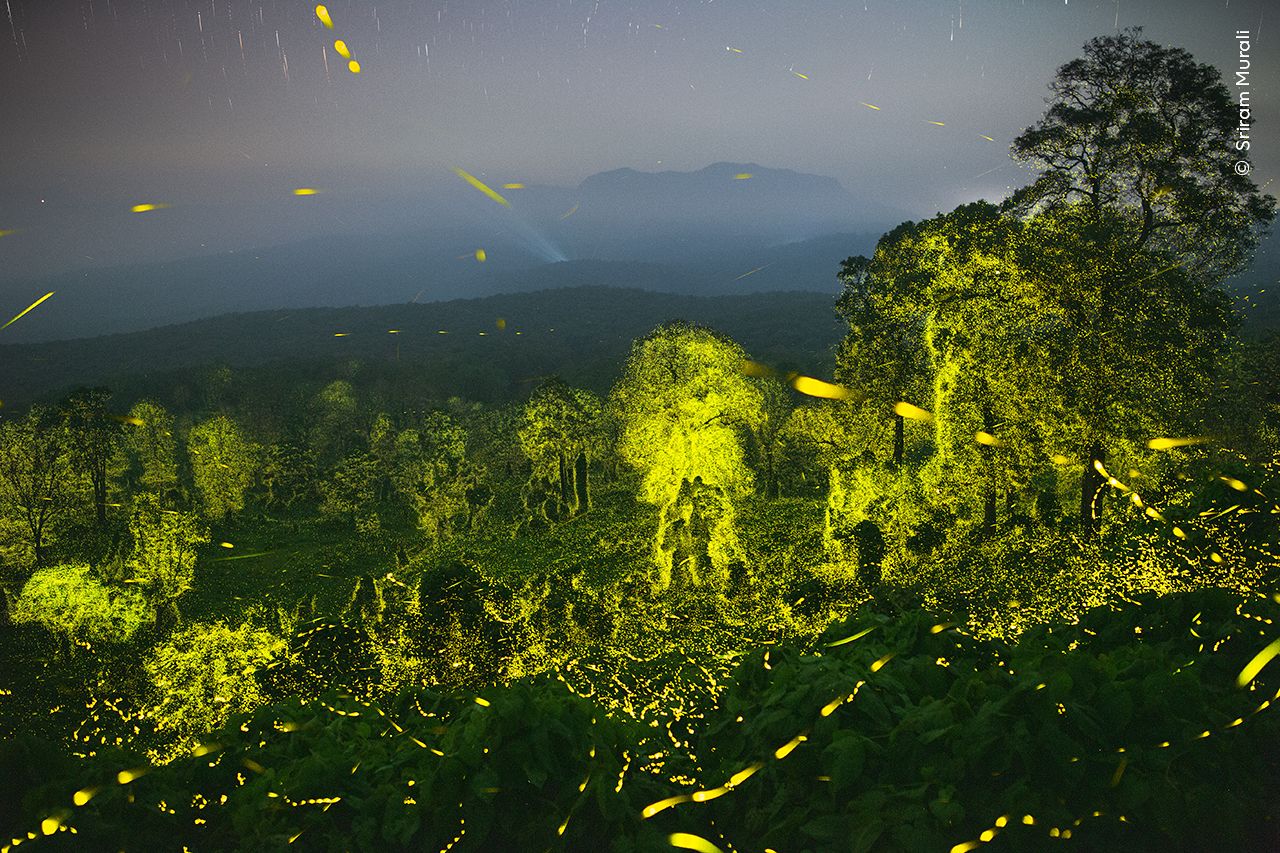 Lights fantastic by Sriram Murali, winner of Behaviour: Invertebrates category.Sriram Murali/Wildlife Photographer of the Year
Lights fantastic by Sriram Murali, winner of Behaviour: Invertebrates category.Sriram Murali/Wildlife Photographer of the YearThis spectacular image of the forest aglow in India’s Anamalai Tiger Reserve takes us into the world of a very special invertebrate: the firefly.
Sriram Murali combined fifty 19-second exposures to show the firefly flashes produced over 16 minutes in the forests near his hometown in Tamil Nadu.
Fireflies, which are in fact beetles, are famous for attracting mates using bioluminescence. The performance starts at twilight, with just a few, before the frequency increases and they pulse in unison like a wave across the forest.
Darkness is a necessary ingredient in the success of this process. But light pollution is affecting many nocturnal creatures, and fireflies are especially susceptible.
RelatedWorld Photography Day: Xavi Bou’s photos show the magical traces birds leave in the skyFrom little to large: Other extraordinary portraits from the natural world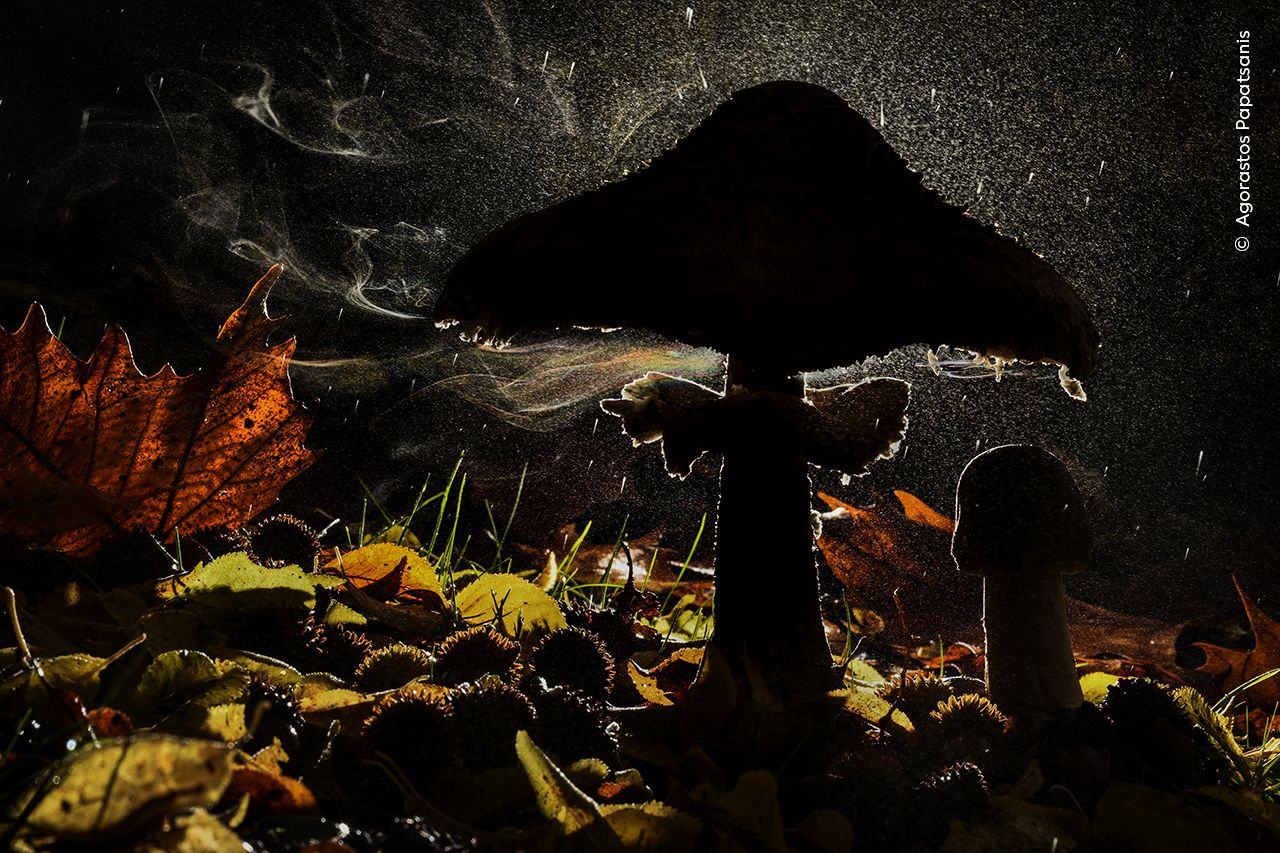 Last breath of autumn by Agorastos Papatsanis. Winner of the Plants and Fungi category.Agorastos Papatsanis/Wildlife Photographer of the Year
Last breath of autumn by Agorastos Papatsanis. Winner of the Plants and Fungi category.Agorastos Papatsanis/Wildlife Photographer of the YearThis magical image of a fungus releasing its spores in the forest could only be achieved with some unusual techniques.
Long fascinated by fungi, Greek photographer Agorastos Papatsanis used a silver photographic umbrella to stop his camera getting wet and covered his flash with a plastic bag.
Parasol mushrooms release spores from the gills under their cap. Billions of tiny spores travel - usually unseen - in the air currents. Some will land where there is moisture and food, enabling them to grow networks under the forest floor.
 Face of the forest by Vishnu Gopal. Winner of the Animal Portraits category.Vishnu Gopal/Wildlife Photographer of the Year
Face of the forest by Vishnu Gopal. Winner of the Animal Portraits category.Vishnu Gopal/Wildlife Photographer of the YearA single eye emerges out of the ferny darkness, set in a cautious face with big ears and a long trunk twisted away from the camera.
It's a lowland tapir, portrayed masterfully by Indian photographer Vishnu Gopal as it steps out of the swampy Brazilian rainforest in Tapiraí, São Paulo.
Lowland tapirs rely on the forest for their diet of fruit and other vegetation and in turn the tapirs act as seed dispersers. This important relationship is threatened by habitat loss, illegal hunting and traffic collisions.
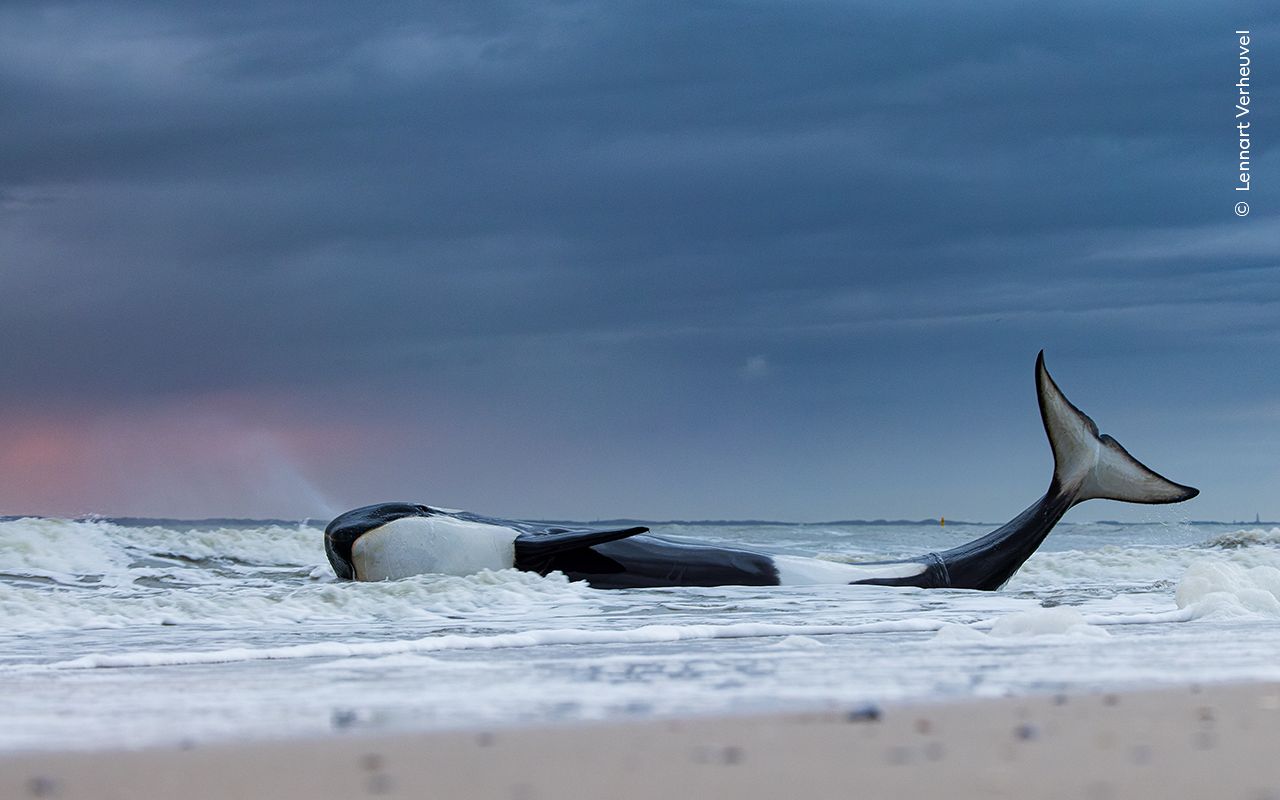 Last gasp by Lennart Verheuvel. Winner of the Oceans: The Bigger Picture category.Lennart Verheuvel/Wildlife Photographer of the Year
Last gasp by Lennart Verheuvel. Winner of the Oceans: The Bigger Picture category.Lennart Verheuvel/Wildlife Photographer of the YearDutch photographer Lennart Verheuvel shows the final moments of a beached orca.
Lying on its side in the surf, this orca had only a short time left to live. Initially rescued, it soon became stranded again on the beach and died.
A study later revealed that not only was it severely malnourished, it was also extremely sick.
Research shows that orcas in European waters have the world’s highest concentrations of polychlorinated biphenyls. These banned chemicals can persist for many years in marine food webs, weakening immune systems and reducing breeding success in whales, porpoises and dolphins.
RelatedFrom wind-powered islands to urban forests: Positive environmental stories from 2023Like other winning photos - from Jakarta’s polluted Ciliwung river to the bulldozed path of a new tourist railway through the forest in Quintana Roo, Mexico - Verheuvel’s shot shows the deadly impact of humans on other animals and ecosystems.
“Whilst inspiring absolute awe and wonder, this year’s winning images present compelling evidence of our impact on nature - both positive and negative,” comments Dr Doug Gurr, Director of the Natural History Museum.
“Global promises must shift to action to turn the tide on nature’s decline.”
The flagship Wildlife Photographer of the Year exhibition featuring the awarded images will open on Friday at the Natural History Museum in London, and run until 30 June 2024.
If you’re feeling inspired to get behind the camera yourself, the 60th Wildlife Photographer of the Year competition is open for entries from 16 October until 7 December 2023.